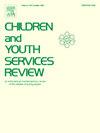The impact of age and sexual orientation on work-related changes and stress early in the pandemic
IF 2.4
2区 社会学
Q1 FAMILY STUDIES
引用次数: 0
Abstract
Background and Purpose
LGBTQIA + young people have worked in jobs disproportionately impacted by COVID-19. With a focus on younger individuals, this study explores the impact of COVID-19 and cumulative work-related stress on sexual minority (LGBQ + ) participants in comparison to heterosexual participants at the onset of the pandemic.
Method
Data were collected from individuals aged 18 years or older, living in the U.S., and English-speaking through Amazon’s Mechanical Turk platform in early April 2020. We employed multiple regression to examine the relationship between sexual minority orientation and cumulative stress for participants working through the first few months of COVID-19, controlling for gender, race and ethnicity, marital status, and age.
Results
The regression model indicated a statistically significant relationship between sexual orientation and cumulative stress (B = 3.03, p = 0.04). When age was added to the regression model, sexual orientation was no longer statistically significant (B = 0.87, p = 0.54), and age was highly significant (B = −0.36, p < 0.001). Regardless of LGBQ + status, age inversely predicted stress, indicating that younger individuals were more likely to experience stress.
Conclusions and Implications
Age was found to suppress the relationship between sexual orientation and cumulative stress, suggesting that LGBQ + status did not have a significant impact on stress levels once age was accounted for. Younger individuals reported higher levels of COVID-19 related cumulative stress compared to older individuals, which aligns with existing literature. Although LGBQ + individuals were over-represented in the sample, this study indicates that stress cannot be solely attributed to their sexual orientation. Understanding the role of age is crucial, particularly considering data indicating significant mental health issues among young people since the pandemic began, which continue to be the case. This highlights the necessity for effective mental health interventions tailored to the needs of young people.
求助全文
约1分钟内获得全文
求助全文
来源期刊

Children and Youth Services Review
Multiple-
CiteScore
6.30
自引率
6.10%
发文量
303
期刊介绍:
Children and Youth Services Review is an interdisciplinary forum for critical scholarship regarding service programs for children and youth. The journal will publish full-length articles, current research and policy notes, and book reviews.
 求助内容:
求助内容: 应助结果提醒方式:
应助结果提醒方式:


